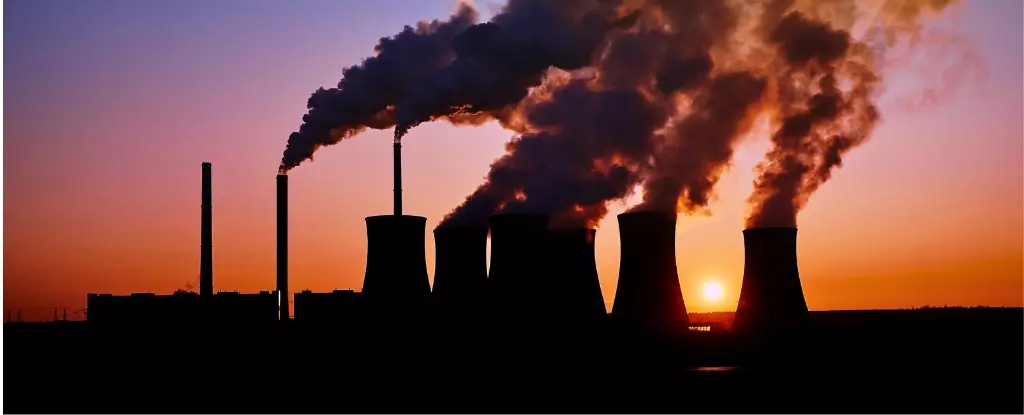Recent critical studies have painted a worrying picture of our planet’s climate, suggesting that we may have officially crossed the threshold of 1.5°C global warming. In accordance with the Paris Agreement forged in 2015, the goal of significantly reducing greenhouse gas emissions was established to keep the global temperature increase below this perilous limit. However, 2024 marked record-breaking temperature levels, prompting a fresh examination of this precept. While fluctuations in temperature year-to-year are common, the latest research indicates that we may have entered a phase of permanent warming that defies prior climate agreements.
In the same breath, it is crucial to note that although 2024 saw temperatures briefly exceed the 1.5°C threshold, evidence suggests that this is more than just a temporary anomaly. Climate experts maintain that it is essential to analyze temperature data over longer periods, yet the two recent studies assert a pressing concern: the extreme heat trends observed could foreshadow long-term climate shifts.
The two studies—conducted by independent researchers from Europe and Canada—employ distinct methodologies but arrive at a similar disquieting conclusion: the planet appears to be edging past the 1.5°C tipping point. The European study focused on historical climate data to identify trends, revealing a correlation between momentary spikes in temperature and subsequent sustained warming. Following such spikes, it is anticipated that the planet will experience continued elevated temperatures for the following two decades.
Conversely, the Canadian researchers conducted a month-to-month analysis and noted that June 2024 represented the twelfth consecutive month of temperatures above the alarming benchmark of 1.5°C. This significant insight leads to the conclusion that sustained heat levels could imply a long-term trend rather than simply a fleeting moment of intensity.
Despite recognizing that natural phenomena like El Niño also contributed to the observed temperature increases, these studies assert that the overarching cause remains anthropogenic climate change. Even if immediate actions to reduce emissions are adopted, it appears that the planet may have already crossed the critical 1.5°C threshold.
For decades, researchers have sounded the alarm regarding the destructive consequences of greenhouse gas emissions stemming from fossil fuel consumption. Unfortunately, emissions continue on an upward trajectory. Since the Intergovernmental Panel on Climate Change (IPCC) released its first report in the early 1990s, annual carbon dioxide emissions have ballooned by approximately 50%. This trend signifies a troubling lack of momentum toward achieving the reductions necessary to hold future warming at bay.
Indeed, attaining net-zero emissions is now the unmistakable goal. However, to revert any warming already incurred, experts assert that significant measures must be implemented, including the advent of “net-negative emissions.” This concept requires extracting more greenhouse gases from the atmosphere than are emitted—a daunting and intricate task. The ramifications of exceeding the 1.5°C threshold pose grave risks for ecological integrity, social systems, and economic stability.
The reality of climate change and the pain it inflicts on vulnerable populations cannot be overstated. Countries like Australia are already experiencing average temperature increases of 1.5°C in relation to pre-industrial standards. The repercussions of these alterations are stark: the Great Barrier Reef struggles to withstand rising water temperatures, while extreme weather events—including devastating bushfires and heat waves—have intensified.
Nevertheless, amidst the stark challenges lie glimpses of potential. Renewable energy sources are gaining momentum across the globe, with several nations observing decreases in fossil fuel consumption. Technological advancements are making strides to curb emissions in problematic industries, such as aviation and construction. However, these developments reflect only a fraction of the urgent action required.
Richer countries, in particular, carry the ethical and moral obligation to support poorer nations that will disproportionately bear the brunt of climate district losses. Although some support initiatives have emerged, the gap remains overwhelming—demonstrating the need for immediate and profound shifts in policy and practice to achieve meaningful progress.
While the latest findings serve as a sober reminder of humanity’s shortcomings in addressing climate change, they also beckon us toward a future of collective action. Acknowledging the depth of the crisis facing our planet necessitates urgent adaptation strategies, significant investment in sustainable technologies, and a robust commitment to equitable solutions.
It is clear that the momentum must shift dramatically to avert further environmental degradation. The time for complacency has passed, and we are now at a critical juncture. Each moment that we delay enacting change contributes inexorably to a warming planet and its dire consequences for generations to come. The imperative is straightforward: commit to action now, or face the increasingly perilous ramifications of inaction in the fight against climate change.


Leave a Reply